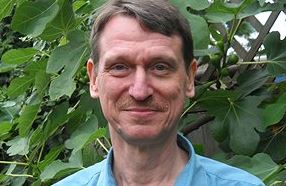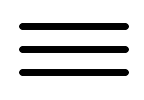 Jon Atack is the author of A Piece of Blue Sky, one of the very best books on L. Ron Hubbard and Scientology. He has a new edition of the book for sale, and for more than a year on Saturdays he helped us sift through the legends, myths, and contested facts about Scientology that tend to get hashed and rehashed in books, articles, and especially on the Internet. He was kind enough to send us a new post.
Jon Atack is the author of A Piece of Blue Sky, one of the very best books on L. Ron Hubbard and Scientology. He has a new edition of the book for sale, and for more than a year on Saturdays he helped us sift through the legends, myths, and contested facts about Scientology that tend to get hashed and rehashed in books, articles, and especially on the Internet. He was kind enough to send us a new post.
Jon, it’s great to see you back, at least for a one-off. Please take us on another dive into the history of Scientology and L. Ron Hubbard.
JON: My pleasure. In a recorded lecture, given in June 1950, Hubbard admitted his own addiction to the barbiturate phenobarbital (Research and Discovery, volume 1, p.124, Case Factors, 15 June 1950). His Navy records show that he was prescribed phenobarbital for a suspected ulcer, towards the end of WWII. By the time Hubbard was admitted to Oak Knoll Naval Hospital, this same drug was being used to induce an altered state in traumatised combatants by psychiatrists Roy Grinker and John Spiegel.
When Hubbard boasted of sneaking into the library at Oak Knoll Hospital to read the latest texts, the work of Grinker and Spiegel was likely available. Their first paper was published in 1943. A book followed in 1945 (Men Under Stress, first edition 1945, second revised edition 1963, McGraw Hill, NY). These two psychiatrists were administering barbiturate drugs — which are classified as “hypnotics” — to US airmen who had survived catastrophic events. Once they were in a barbiturate trance, they were led to abreact — or re-live — those catastrophic events, in the attempt to overcome what has since been labelled Post-Traumatic Stress Disorder. Similar work was being done in Britain by William Sargent, who would later be listed by the Guardian Office as the UK’s top Suppressive Person.
Grinker and Spiegel called their work “narco-synthesis” and Hubbard was aware of it — he referred to it in Science of Survival. The two psychiatrists used an old Freudian technique, once their patients were in a barbiturate trance.
Hubbard had been practising hypnosis for some time, so with access to both barbiturates and the new ideas about “battle fatigue” or “shell shock,” it is no great surprise that he came up with Dianetics, though he advocated the use of amphetamines rather than barbiturates in Dianetics: The Modern Science of Mental Health. Like barbiturates, they reduce the ability to reason, so increase hypnotic susceptibility (D:MSMH, p.363; p.389 in later editions).
Dianetics is little more than a technique abandoned early on by Freud, which seeks to abreact traumatic memories. In his Worcester Lectures, given before the First World War, Freud explained this experimental method is some detail (Two Short Accounts of Psycho-Analysis, Penguin books, 1962). The English translation — published long before D:MSMH — gives the terms “chains” and “charge.” It also mentions memories of physical trauma — Hubbard’s “engrams” — as well as the “secondaries” and “locks” of Hubbard’s later reworking. Freud used a counting technique to induce rapport (or reverie, as both other hypnotists and Hubbard call it). He also used the repeater technique.
Don Rogers was with Hubbard while he was writing D:MSMH (his appendices were published as a part of that book). He told me that Hubbard had used only “deep trance” hypnosis in his research, but when Art Ceppos offered to publish, Hubbard decided that deep trance was too unpopular, so, without further “research,” went with the “reverie” or light trance approach abandoned by Freud fifty years earlier. He soon admitted that this technique was hypnotic, in Science of Survival (Book II, p.227). Beyond his extensive terminology, there is nothing original in Dianetics. Freud abandoned the approach, because it caused no significant change in the patient, save for increasing dependence upon the therapist. Which would be useful if you wanted to keep raking in the cash, rather than curing the patient.
Grinker and Spiegel, whose work likely alerted Hubbard to the possibilities of abreactive therapy, republished their own Men Under Stress in 1963, admitting that the high hopes they had entertained for their therapy had not materialised. Abreaction was useful only for those who had been extremely traumatised.
D:MSMH was withdrawn from sale by publisher Art Ceppos, precisely because it did not live up to Hubbard’s promises. The Dianetics craze lasted about six months. 150,000 copies were sold before Ceppos withdrew the book, so plenty of people found that the techniques did not cure short-sight, raise IQ to genius level, eliminate the common cold or raise anyone from the dead, as Hubbard so emphatically claimed. Nor did it cure cancer or leukemia, as he also assured anyone who would listen. Yet, over six decades later, we are still dealing with the fall-out from this money-making scheme. Perhaps it is time to listen to the Great OT himself: “Any time anybody gets enough altitude he can be called a hypnotic operator, and what he says will act as hypnotic suggestion. Hypnotism is a difference in levels of altitude…if the operator can heighten his own altitude with regard to the subject…he doesn’t have to put the subject to sleep. What he says will still react as a hypnotic suggestion….With parity, such as occurs between acquaintances, friends, fellow students and so on, there is no hypnotic suggestion” (Education and Dianetics, 11 November 1950, Research and Discovery, volume 4).
THE BUNKER: Another devastating archeological dig, Jon. Thank you.
——————–
Posted by Tony Ortega on July 9, 2014 at 07:00
E-mail your tips and story ideas to tonyo94@gmail.com or follow us on Twitter. We post behind-the-scenes updates at our Facebook author page. Here at the Bunker we try to have a post up every morning at 7 AM Eastern (Noon GMT), and on some days we post an afternoon story at around 2 PM. After every new story we send out an alert to our e-mail list and our FB page.
Learn about Scientology with our numerous series with experts…
BLOGGING DIANETICS (We read Scientology’s founding text) 1, 2, 3, 4, 5, 6, 7, 8, 9, 10, 11, 12, 13, 14, 15, 16, 17, 18, 19, 20, 21, 22, 23, 24, 25
UP THE BRIDGE (Claire Headley and Bruce Hines train us as Scientologists) 1, 2, 3, 4, 5, 6, 7, 8, 9, 10, 11, 12, 13, 14, 15, 16, 17, 18, 19, 20, 21, 22, 23, 24, 25, 26, 27, 28, 29, 30, 31, 32, 33, 34, 35, 36, 37, 38, 39, 40, 41, 42, 43, 44, 45, 46, 47
GETTING OUR ETHICS IN (Jefferson Hawkins explains Scientology’s system of justice) 1, 2, 3, 4, 5, 6, 7, 8, 9, 10, 11, 12, 13, 14
SCIENTOLOGY MYTHBUSTING (Historian Jon Atack discusses key Scientology concepts) 1, 2, 3, 4, 5, 6, 7, 8, 9, 10, 11, 12, 13, 14, 15, 16, 17, 18, 19, 20, 21, 22, 23, 24, 25, 26, 27, 28, 29, 30, 31, 32, 33, 34, 35, 36, 37, 38, 39, 40, 41, 42, 43
PZ Myers reads L. Ron Hubbard’s “A History of Man” | Scientology’s Master Spies | Scientology’s Private Dancer






